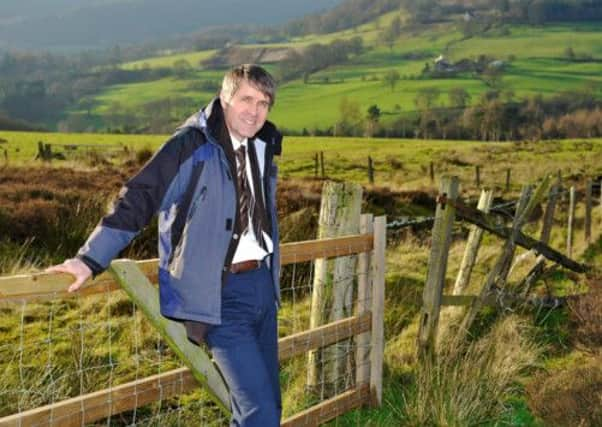Notes of discord over future of peaceful national parks


Whenever Andy Wilson needs to clear his head he always heads to the same place.
While the chief executive of the North York Moors National Park spends his days surrounded by dramatic countryside, it’s the coastal communities of Staithes and Robin Hoods Bay where he really gets away from it all.
Advertisement
Hide AdAdvertisement
Hide Ad“I grew up in London and we used to come to Yorkshire on family holidays, so for as long as I can remember the county has occupied a very special place in my heart.”
While Wilson has waxed lyrical for years about Yorkshire’s landscape, when he joined the authority over a decade ago he got an official platform from which to shout about its virtues. Next week that could prove crucial.
For the first time in 15 years Yorkshire will host the National Park Authorities annual conference. Featuring a number of key note speakers, including Owen Paterson, Secretary of State fro Environment Food and Rural Affairs, by the end they will issue a declaration which it is hoped will shape future thinking and policy relating to National Parks
“I think 15 or 20 years ago we had much more of an attachment to the landscape and it’s something we need to get back,” says Wilson. “Certainly there seems to be a lack of political will to put landscape at the heart of policy making.
Advertisement
Hide AdAdvertisement
Hide Ad“There is also a sense that people are embarrassed to make a fuss. There’s a tendency if you speak out against say a new development you’re immediately accused of nimbyism. It has made people more reluctant to stand up for what they believe in and that’s a hurdle we have to get over.”
Yorkshire is a microcosm of the issues many other parks are facing. While its dramatic moors have fuelled a lucrative tourist industry, it’s also a working landscape and one blessed with natural resources.
Sirius Minerals is hoping to develop a £1bn potash mine just south of Whitby and while the company’s planning application has now been delayed, the proposals have divided opinion. Some see it as vital job creation. For others, it would be the very definition of a blot on the landscape.
“What we have to remember is that since the first national parks were introduced in the 1950s an awful lot more of the country has become industrialised,” says Wilson. “We have lost thousands of square miles of open space to housing developments and motorways and so our parks are more not less in important than they ever were.”
Pressure, however, is building.
Advertisement
Hide AdAdvertisement
Hide AdConservative MP Nick Boles recently hinted that the government would not be adverse to a further relaxation of planning laws to allow more development within national park boundaries
Responding to a question in parliament last week he said he was worried about “the danger of making rural communities into museum pieces where they are not so much protected as embalmed”.
“I think this applies to many communities within national parks,” he added. “These will only retain their appeal and retain life if they are allowed to change and develop. If people are able to get jobs and set up businesses, that is a necessary underpinning of a national park not just as a wilderness, but as a living, breathing set of communities.”
On the latter point, at least, Wilson agrees.
“It’s true we have a growing population and that means an increased demand on space,” he says. “However, people need beauty and nature in their lives and always have done. Research has proved that people get sick if they don’t have that. People need inspiration and the national parks are stunningly beautiful.
Advertisement
Hide AdAdvertisement
Hide Ad“It’s easy just to see landscape as just scenery, but it’s much more than a two-dimensional picture postcard. It puts us in touch with the deep history of this island. You can see that in the geological layers, but sadly most of us have lost the ability to really read the landscape.
“I look at my own children and while they learn much more about the environment than we ever did at school, in general their connection to the countryside is much weaker.
“I don’t think it’s over stating the point to say there is something almost spiritual about our parks. The monks recognised that which is why they built abbeys like Rievaulx and Byland where they did and we will all be much poorer if we allow ourselves to become disconnected from the landscape.”
The Association of National Park Authorities Conference takes place from September 25 to 27.